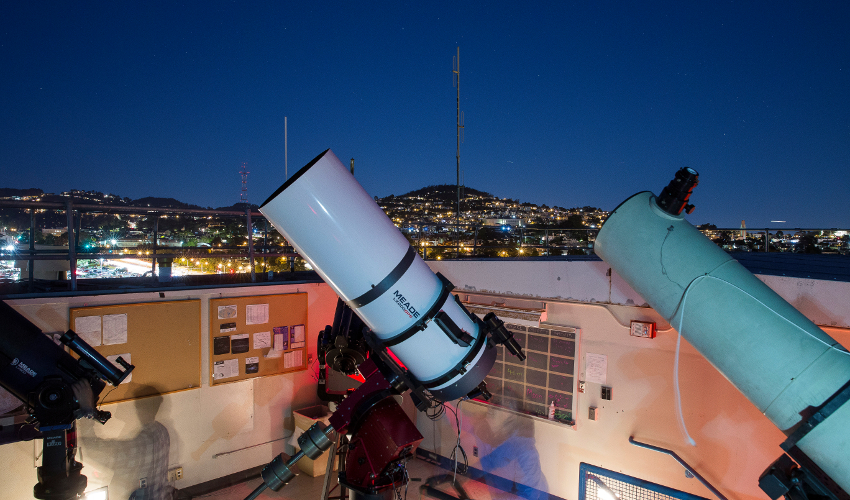Astronomy ed event turns the telescope on Earth

The SF State Observatory, outfitted with several telescopes, will be open to the public for events on Oct. 18.
Free ‘Earth to Space’ conference to bring diverse views on astronomy to SF State Oct. 18
If you could take a tour of our cosmic neighborhood, what would be on your itinerary? The massive geysers of the ice moon Enceladus? A lava channel on Venus longer than the Nile River? What about the 12-mile high Verona Rupes on Uranus’ moon, Miranda — the tallest cliff in the solar system? While these destinations may be out of reach, the astronomers who study them will be near at hand Oct. 18 for the Astronomical Society of the Pacific’s “Earth to Space” event at San Francisco State University.
The day’s activities are free and open to the public and will feature a talk on the top “tourist attractions” of the solar system along with other space-focused educational talks and activities. The conference will also highlight the uncertain future of one particular planet: our own.
“We want to bring the astronomical perspective to issues of climate change and the Earth,” said Professor of Physics and Astronomy Adrienne Cool, an event organizer. “Earth is a planet — it’s the only planet we’re ever going to have, actually.”
Cool says astronomers offer unique insight into the urgency of climate change. “Astronomers are extremely conscious of the fact that we are a tiny, tiny mote in very empty space,” she explains. “We deal with that all the time: the extraordinary isolation and vulnerability of this planet that we all live on.” Sharing that perspective is one of the ways the Astronomical Society of the Pacific aims to connect people with science at this conference.
Linda Shore, CEO of the Astronomical Society of the Pacific and an SF State alumna (B.A., ’63; M.S., ’86), says she expects the event will “help the public see the relevance of astronomy to their everyday lives, encourage scientists to engage with their communities and help science educators expand their own knowledge and improve how they facilitate science learning.” That’s always been the mission of the society, Shore explains: bringing together people from all walks of life to “celebrate the awe and wonder of the night sky.”
To spread that wonder, scientists and environmental policy experts will give talks at the event on topics ranging from the history of lunar exploration to the search for distant planets. Attendees will be able to hunt for sunspots with solar telescopes, experience a planetarium show and visit the University’s observatory after dark to view planets and galaxies in the sky (weather permitting). Students in SF State’s Department of Physics and Astronomy will also host Astronomy on Tap, a series of short talks about their own research.
As we face the crisis of climate change in our own little corner of the sky, creating a community of shared wonder may be more important than ever, Cool explains. “I think that’s my hope for this conference,” she said. “That it will make us all realize that we have lots in common, lots to talk about and lots we can help each other with.”
The conference will be held from 1 to 10 p.m. Friday, Oct. 18, across SF State’s main campus. For details, see the Astronomical Society of the Pacific’s webpage.